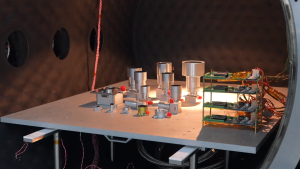
Star tracker serve as spacecraft “eyes.” They use fixed star patterns as references. Thus, they determine the spacecraft’s attitude in 3D space.
Star trackers are optical devices. They feature high-resolution cameras or photoelectric sensors. These capture starfield images. Then, complex algorithms match observed stars with built-in star catalogs. Consequently, they compute precise spacecraft attitude.

Key Functions in Spacecraft
– GEO communication satellites: Star trackers keep antennas aligned with ground stations. Thus, signals remain uninterrupted.
– In deep space, signals delay for hours. Star trackers enable rapid initial attitude acquisition after launch or maneuvers. They need no ground support.
– Combined with gyroscopes and sun sensors, they periodically correct gyro drift errors.
– Laser Communication: On ESA’s Alphasat, star trackers boost beam pointing to micro-arcsecond accuracy.
Star Tracker Advantages
– Ultra-High Precision: Sub-arcsecond level; preferred for deep space.
– All-Weather Availability: Stars never “disappear” if bright sources are avoided.
– Low Power, Long Life: No moving parts; typical lifespan exceeds 15 years.
– Radiation-Hardened Design: Uses hardened electronics; suits high-radiation zones like Jupiter orbit.
Send us a message,we will answer your email shortly!